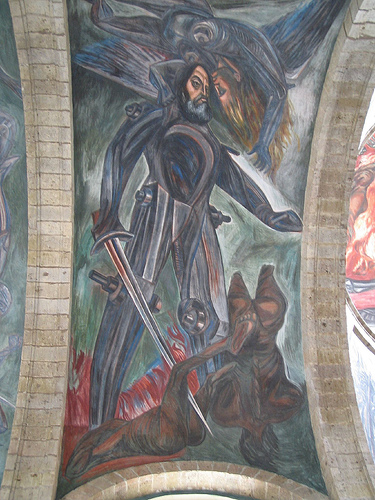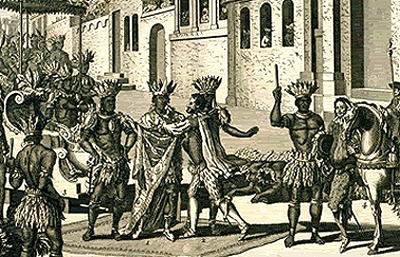Hernan Cortes
 From Conservapedia
From Conservapedia Hernando Cortés (Medellin, Spain, 1485 - Castilla de la Cuesta, Spain, 1547) was a Spanish Conquistador. He is famous for his brutal conquest of the Aztecs. In February 1519, Cortés departed for the new world. His mission: to bring Catholicism to the 'uncivilized' nations of the new world, his banners read "Brothers and companions, let us follow the Sign of the Cross with true faith and in it we shall conquer." All the equipment he had was 11 ships, 508 Spanish soldiers, 100 sailors, 16 horses (unknown to the New World), and 4 small cannons.
The journey to the new world lasted over two months, and the Spanish commander and his soldiers finally set foot in the new world on Good Friday of that year. The day was the 22nd of April, in the year of Our Lord 1519. To the Aztecs it was the year 1- Reed, the day 9-Wind. Supposedly, in Aztec religious tradition, on this day their chief god, Quetzalcoatl, had been predicted to return to conquer the evil spirits who had expelled him from that land. The prediction of the returning god was that he would come wearing black, and armored in shining plates of steel. Ironically, the Spaniards came dressed in all black, as was the ancient European custom on Good Friday, and the Spanish military was always armed with steel or brass armor.
Cortes first constructed a fort. Once this operation was complete, he left about 200 Spanish Conquistadors to garrison the citadel, and proceeded inland with the remaining 300. The Conquistadors first came to a city called Zoctitlan, were no defense was put up. So Cortés marched on unhindered, and his next stop was the city of Tlaxcala. However, here staunch defense was put up. Outnumbered 10 to 1, the Spaniards won a miraculous victory. But almost all of the troops were injured. The conservative commander would have retreated to the coast, but Cortés pushed on, saying the greater the obstacles, the greater the glory. Cortés's next move was to make a treaty with the Tlaxcalans. Marching forward, Cortés pushed on to Cholula. The Cholulans were prepared, and set a trap for Cortes. However, the chief's wife warned him and the Spaniards won another stunning victory. Finally on November 13, they entered the Aztec's capitol, Tenochtitlan. Originally, the Aztecs gave Cortés and his men a grand tour of the city, including the temple where all of the human sacrifices were made.
As 1519 came to a close, Cortés took a small band of men to address another Spanish commander threatening to attack him. He won an easy victory, but the garrison he had left at Tenochtitlan was besieged by the Aztecs. Cortés returned to the Aztec capital, and took charge of his small force. On June 25, 1520, Cortés led an assault on the Aztec temple. His men fought their way up the 114 steps to the top and victory was his. During the fight Montezuma was killed. The Aztecs selected Cuauhtemoc as the new Emperor. However, Cortés' men were too weary to continue fighting, and could not follow up the win. Their food was short so he retreated. But they were attacked again at the plains of Otumba, a small plain outside Tlaxcala. Outnumbered once more, the weary Spanish managed one more miraculous victory. They spent the remainder of the year in Tlaxcala recovering.
The following May Cortes began to march on Tenochtitlan. On May 13, 1521, the siege of the city began. This began 93 days of constant warfare; during the day the Spanish would gain ground, during the night they would lose it. Finally, in August, the Spaniards began to hold the ground they were capturing. The Aztec defenders started to run low on food and water. Then on August 13, 1521, Cortes led an assault on the temple of the Aztec gods. The Spaniards fought their way to the top. At the peak, they erected the Cross. Once more they fought their way down, but this time victory was theirs for good. During the battle the Spanish had captured Cuauhtemoc, and the war was over. The Spaniards had won.
While some people regard Cortes as a man on a mission to bring Christianity to the Americas, history generally records him as a gold-hungry bandit who used military might in search of wealth.
See also[edit]
Categories: [Conquerors] [Military Commanders] [Mexican History] [Explorers] [Spanish Empire]
↧ Download as ZWI file | Last modified: 02/25/2023 03:28:25 | 5 views
☰ Source: https://www.conservapedia.com/Hernan_Cortes | License: CC BY-SA 3.0
 ZWI signed:
ZWI signed:

 KSF
KSF